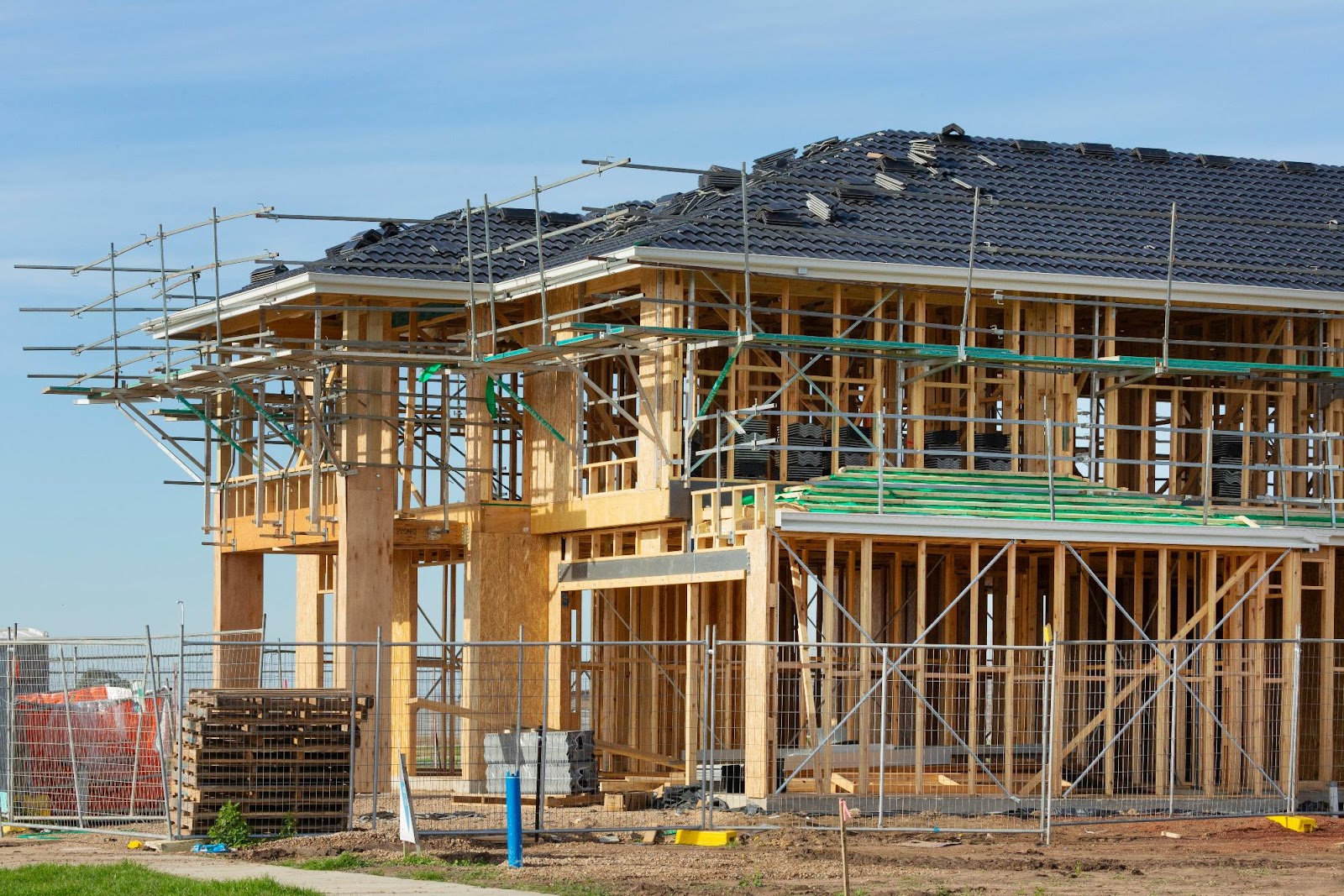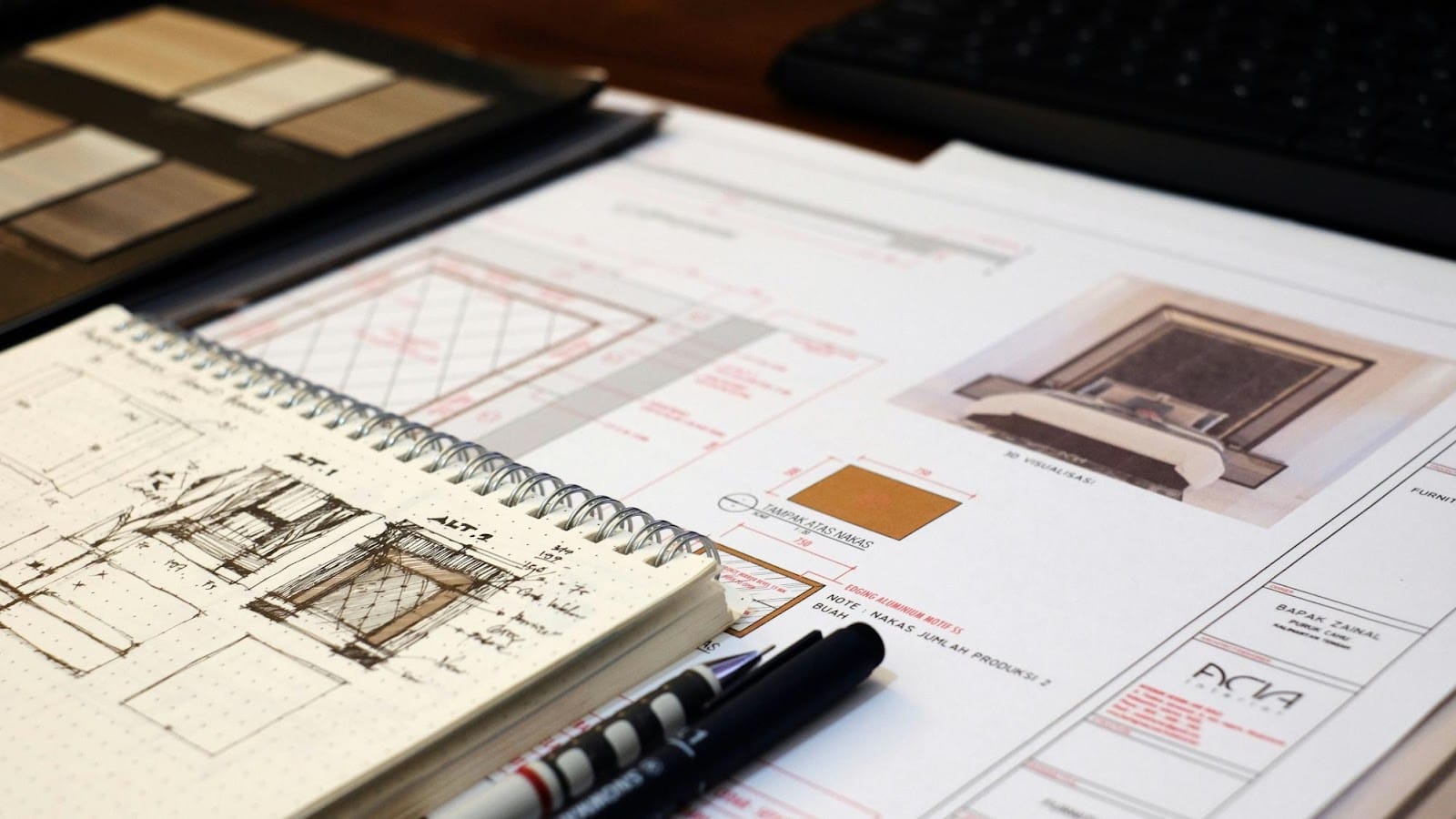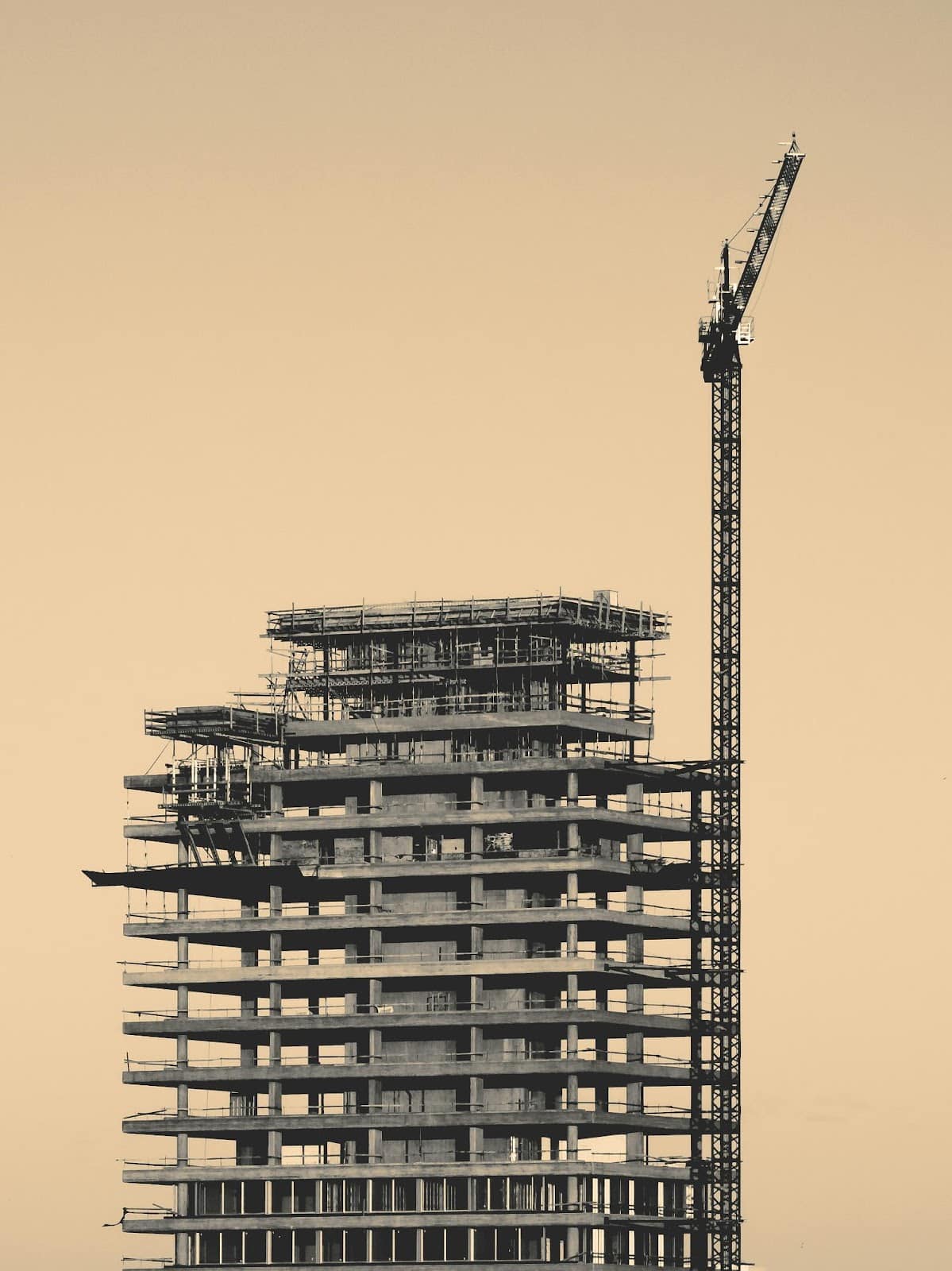Building a custom home is a dream for many. It offers the chance to create a space tailored to your needs. However, the financial aspect can be daunting.
Custom home budgeting is crucial. It helps avoid unexpected expenses and financial strain. Many homeowners wish they had known more about budgeting earlier.
Understanding the costs involved is key. From design to construction, each phase has its own expenses. Preconstruction planning sets the financial foundation.
Hidden construction costs can surprise you. Being prepared helps manage these effectively. Accurate home builder estimates are essential for planning.
Labor and material costs can fluctuate. Knowing what to expect helps in setting a realistic budget. Financing options, like construction loans, offer flexibility.
Value engineering can maximize quality while saving money. Tracking expenses ensures you stay on budget. With the right planning, building your dream home is achievable.
Why Custom Home Budgeting Matters
Custom home budgeting is a vital component of the home-building process. A well-thought-out budget serves as a roadmap. It helps ensure that your financial resources are aligned with your design goals.
Many homeowners overlook the importance of a detailed budget. This oversight can lead to financial surprises. Having a thorough budget helps in predicting costs accurately and planning accordingly.
A strong budget also aids in prioritizing features. You’ll know where to allocate funds for maximum impact. Consider these aspects:
- Understand your financial limits.
- Plan for every stage of the build.
- Account for unforeseen expenses.
By grasping the significance of budgeting, homeowners can achieve their dream home without financial distress.
Preconstruction Planning: Laying the Financial Foundation
Before breaking ground, preconstruction planning is essential. This stage helps outline your project and set clear financial expectations. It reduces the risk of unexpected costs later on.
Creating a comprehensive plan involves collaboration. Work closely with architects and builders to establish a shared vision. This collaboration ensures all parties understand the budget constraints.
A detailed plan acts as a cornerstone for smart financial decisions. It allows for proactive management of resources. This proactive approach is vital in maintaining financial stability throughout construction.
Include the following in your preconstruction plan:
- Set a realistic timeline and milestones.
- Identify potential risk factors and solutions.
- Establish transparent communication with all stakeholders.
Effective preconstruction planning sets a strong financial foundation for your custom home. It enables you to make informed decisions and build with confidence.
Creating a Realistic Design Budget
A well-thought-out design budget is crucial. It dictates the scope of your custom home and helps manage expectations. Designing the budget should reflect your financial limits and design goals.
Aligning your design budget with your vision can be challenging. Prioritize essential features and allocate funds accordingly. This prioritization ensures that your design dreams do not exceed financial reality.
Consider all aspects of the design when budgeting. Factor in materials, finishes, and labor needed to bring your vision to life. Leaving room for adjustments helps accommodate unforeseen changes.
Key elements to include in your design budget:
- Prioritize essential and desired features.
- Account for quality materials and labor costs.
- Allow flexibility for adjustments or upgrades.
A realistic design budget supports sound financial planning. It bridges the gap between creative aspirations and practical limitations.
Understanding the Cost Breakdown of Home Construction
Breaking down construction costs is vital for any custom home project. Understanding these components helps in better financial planning. Each element plays a significant role in the overall budget.
The primary costs in home construction include labor, materials, and permits. Labor is often the most significant expense, as skilled workers are essential for quality construction. Material costs vary depending on choices like wood, metal, or concrete.
Additionally, permits and fees are a critical factor. These costs ensure the project complies with local regulations and building codes. Overlooking this category can lead to financial surprises.
Beyond these main categories, other factors affect the budget. Site preparation, landscaping, and utilities installation can add costs. These expenses are often underestimated but essential for a complete home.
Key cost categories in home construction:
- Labor and workforce
- Building materials
- Permits and fees
- Site preparation and utilities

Evaluating each component provides clarity and enables sound budgeting. It empowers homeowners to make informed decisions and avoid financial pitfalls.
Hidden Construction Costs and How to Avoid Them
Hidden construction costs can disrupt even the best-planned budgets. Identifying these costs early is essential for financial stability. Proactive measures can prevent unpleasant surprises.
Unexpected expenses often arise from overlooked details. Factors such as soil issues, utility hookups, or unanticipated building code requirements can add extra costs. Proper preconstruction planning helps mitigate these risks effectively.
To protect your budget, consider these strategies:
- Conduct thorough site assessments before starting.
- Seek detailed estimates from builders.
- Allocate contingency funds for unforeseen events.
By anticipating these hidden costs, homeowners can maintain control over their budgets. Transparency and communication with your builder are key. This foresight ensures a smoother construction process and avoids overspending.
Construction Budget Planning: Tools and Strategies
Effective construction budget planning is crucial for avoiding financial hiccups. Utilizing the right tools and strategies can make all the difference. Careful management can maximize the value of your investment.
Several digital tools are available to assist with budgeting. Applications and software can help track expenses, manage timelines, and communicate with contractors. These tools provide a clear financial overview.
Consider these strategies for efficient budget planning:
- Use budgeting apps for real-time expense tracking.
- Prepare detailed lists of all projected costs.
- Regularly review and update your budget.

Staying organized is vital for construction budget planning. Consistent reviews and open communication will keep your project on course. With the right approach, budget planning can lead to successful project completion.
Home Builder Estimates: Getting Accurate Numbers
Obtaining precise builder estimates is essential for custom home budgeting. Accurate numbers prevent surprises during construction. It’s important to understand how estimates are formulated.
To ensure transparency, request itemized estimates from your builders. This breakdown should cover labor, materials, and additional fees. Ask your builder to clarify any uncertainties.
For reliable estimates, follow these steps:
- Compare estimates from multiple builders.
- Verify their reputations and past work.
- Discuss potential cost changes upfront.
An informed approach to gathering estimates ensures financial preparedness. Knowing the true scope of costs helps in planning your budget effectively. Be proactive in your discussions with builders to avoid misunderstandings.
Labor and Material Costs: What to Expect
Understanding labor and material costs is crucial in custom home budgeting. Labor fees often take a sizable portion of the budget. It’s vital to anticipate these expenses early in the planning process.
Material costs can vary greatly based on quality and availability. Selecting materials wisely impacts both aesthetics and budget. Balance is key to ensure you don’t overspend without sacrificing quality.
Here are tips to manage these costs:
- Research current market prices for materials.
- Consider long-term savings with sustainable materials.
- Communicate with builders about labor cost expectations.
Anticipating these costs helps avoid financial surprises. Collaborate with your builder to explore cost-effective alternatives. Proper planning can facilitate a smoother construction process.

Managing Cost Overruns and Change Orders
Cost overruns can derail your budget quickly. They occur when actual expenses exceed estimates due to unforeseen issues. Being prepared is essential to handle them effectively.
Change orders are another common budget disruptor. They happen when plans need adjustments during construction. These changes often lead to increased costs and delays.
To manage these challenges, consider these strategies:
- Set aside a contingency fund for unexpected expenses.
- Communicate regularly with your builder to stay informed.
- Review change orders carefully before approval.
Addressing overruns and changes swiftly helps maintain financial control. Establishing open communication and a flexible budget will aid in navigating these potential hurdles.
Financing a Custom Home: Construction Loan Basics
Financing a custom home can be complex. Construction loans are a popular option. These are short-term loans that cover building costs.
Understanding the basics is crucial before committing. Construction loans typically have higher interest rates. They are issued in phases, with funds disbursed as building progresses.
When selecting a loan, keep these points in mind:
- Interest rates and terms vary by lender.
- Loan approval often requires detailed project plans.
- Borrowers usually need a strong credit history.
Consult with financial experts to explore options suited to your needs. Grasping the intricacies of construction loans ensures informed decisions. This knowledge lays a solid foundation for financing your custom home build.

Value Engineering: Maximizing Quality and Savings
Value engineering enhances the quality of your home without increasing costs. This approach involves evaluating materials and methods to optimize value. By prioritizing essential features, you maintain quality and control expenses.
Key steps in value engineering include:
- Assessing different materials for cost-efficiency.
- Analyzing design alternatives to reduce expenses.
- Collaborating with experts to identify savings.
Implementing value engineering requires careful planning and consultation. By integrating this strategy early, you ensure a balance between aesthetics and budget. This method empowers you to construct a home that meets both your dreams and financial constraints.
Budgeting Tips for Homeowners: Lessons Learned
Building a custom home can be financially challenging. Many homeowners learn crucial lessons about budgeting the hard way. Here’s a compilation of insights to guide you smoothly through this journey.
First, it’s essential to have a detailed budget from the start. Overestimate costs to avoid surprises later. Include everything from permits to landscaping in your calculations.
Second, keep track of every dollar spent. Use digital tools or apps to manage finances effectively. Regular reviews of your expenses help keep the budget aligned with your objectives.
Consider these tips:
- Always add a contingency fund for unplanned expenses.
- Communicate regularly with contractors about costs.
- Prioritize expenditures that align with core needs.

Learning from others helps. Use these tips to navigate and manage your custom home budgeting with confidence and ease.
Tracking Expenses and Staying on Budget
Staying on budget requires diligent expense tracking. Start by setting up a comprehensive home expense tracker. This tool helps ensure you don’t overspend in any category.
Regularly updating your tracker is crucial. Adjust allocations as needed to address unexpected changes. Maintain clear records of every transaction to pinpoint potential cost overruns.
Consider these tracking strategies:
- Use spreadsheet software or budgeting apps.
- Compare monthly expenses with initial estimates.
- Schedule periodic reviews to assess financial health.
Diligent tracking forms the backbone of a successful custom home build. Use these strategies to maintain control over your spending and achieve your financial goals.
Working with Builders and Architects: Communication and Contracts
Effective communication with builders and architects is key to a successful project. Clear contracts prevent misunderstandings and outline expectations. Always include detailed project specifications and timelines.
Be proactive in asking questions to clarify any doubts. Establish regular meetings to discuss progress and concerns. This creates an open line of communication.
Essential aspects to cover in contracts:
- Scope of work and responsibilities
- Payment schedule and terms
- Change order procedures
Implementing these practices ensures a smooth construction process. A well-defined contract coupled with consistent communication helps manage the project efficiently. Build a strong team relationship and set the stage for success.
Planning for the Unexpected: Contingency Funds and Delays
Unexpected issues can disrupt construction projects. Having a contingency fund is essential. This fund cushions against delays and unforeseen expenses.
Allocate about 10-15% of the total budget for contingencies. This helps cover unexpected costs like design changes or materials shortages. Be prepared to adjust plans if necessary.
Key aspects to consider when planning:
- Possible weather-related delays
- Sudden material price increases
- Unanticipated site conditions
This readiness minimizes stress and financial strain. Being proactive in planning for the unexpected keeps the project on track. Contingency funds act as a safety net, ensuring the build stays within budget.
Post-Construction Financial Planning
Once construction is complete, financial planning continues. Post-construction costs can surprise new homeowners if unprepared. Think beyond the building itself to ongoing expenses.
Regular maintenance and repairs demand attention. Consider future upgrades or landscaping projects. Begin a financial plan for these future needs.
Key areas to focus on:
- Routine maintenance costs
- Possible future renovations
- Landscaping and exterior enhancements
Effective post-construction planning ensures smooth transitions into homeownership. By anticipating future expenses, you secure long-term financial stability.
Conclusion: Building Your Dream Home with Confidence
Navigating the complexities of custom home budgeting can be daunting. However, with thorough planning, it’s entirely manageable. By understanding costs and planning with care, you set yourself up for success.
Embrace these budgeting strategies to build your dream home with assurance. A clear budget leads to fewer surprises and greater confidence. This allows you to focus on turning your vision into a reality.




